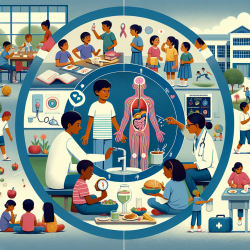Introduction
In today's educational landscape, the importance of health literacy cannot be overstated. The research article "Promoting Health Literacy Through Defining and Measuring Quality School Health Education" by Videto and Dake offers valuable insights into how practitioners can enhance their skills and improve health literacy in schools. This blog explores the key outcomes of the research and provides actionable recommendations for practitioners seeking to advance their practice.
Understanding the Challenges
The article identifies three primary challenges that need to be addressed to improve school health education:
- Making quality school health education the new norm.
- Establishing school health education as a key component in improving health literacy in the United States.
- Operationally defining quality school health education and establishing relevant measures to determine success.
Recommendations for Practitioners
To address these challenges, practitioners can take the following steps:
1. Define and Describe Quality School Health Education
Engage with school leaders, health teachers, and professional organizations to create a universal definition of quality school health education. This definition should be accepted at local, state, and national levels to ensure widespread buy-in and implementation.
2. Advocate for Health Literacy
Promote the integration of health literacy within school health education programs. Emphasize the importance of teaching students not only content knowledge but also the skills necessary to access, understand, and apply health information effectively.
3. Implement the WSCC Model
Utilize the Whole School, Whole Community, Whole Child (WSCC) model as a framework for developing comprehensive school health education programs. This model emphasizes collaboration between schools and communities to support the holistic development of students.
Encouraging Further Research
Practitioners are encouraged to conduct further research into the impact of quality school health education on long-term health and academic outcomes. By collecting and analyzing data, educators can better understand the effectiveness of their programs and make informed decisions to enhance student well-being.
Conclusion
Improving health literacy in schools is a multifaceted challenge that requires collaboration, advocacy, and a commitment to quality education. By implementing the recommendations outlined in this blog, practitioners can play a pivotal role in shaping the future of school health education and promoting healthier, more informed generations.
To read the original research paper, please follow this link: Promoting Health Literacy Through Defining and Measuring Quality School Health Education.










